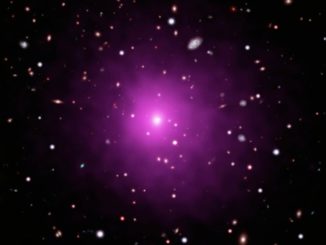The Event Horizon Telescope collaboration captured the world’s imagination in 2019 with a mind-bending photograph of a supermassive black hole’s shadow at the heart of galaxy M87. Imagine the light show from two such monsters locked in a space-warping dance, distorting and redirecting light emitted from the super-heated gas swirling in the accretion disc that surrounds each one. That’s what researchers at NASA’s Goddard Space Flight Center set out to accomplish with a computer visualisation showing two gravitationally bound supermassive black holes, one with 200 million times the mass of of the Sun and the other weighing half as much. A desktop computer would have taken about 10 years to complete the calculations behind the animation, but using the Discover supercomputer at NASA’s Centre for Climate Simulation, it took about one day. The result is mesmerising:
“Viewed from near the orbital plane, each accretion disk takes on a characteristic double-humped look,” NASA says in a release. “But as one passes in front of the other, the gravity of the foreground black hole transforms its partner into a rapidly changing sequence of arcs. These distortions play out as light from both disks navigates the tangled fabric of space and time near the black holes.”



